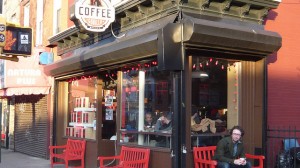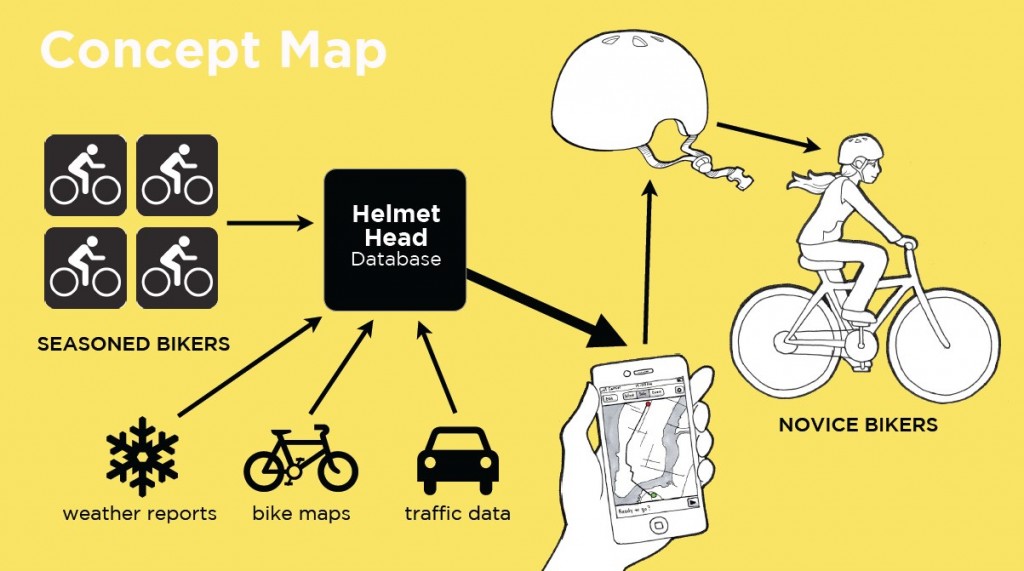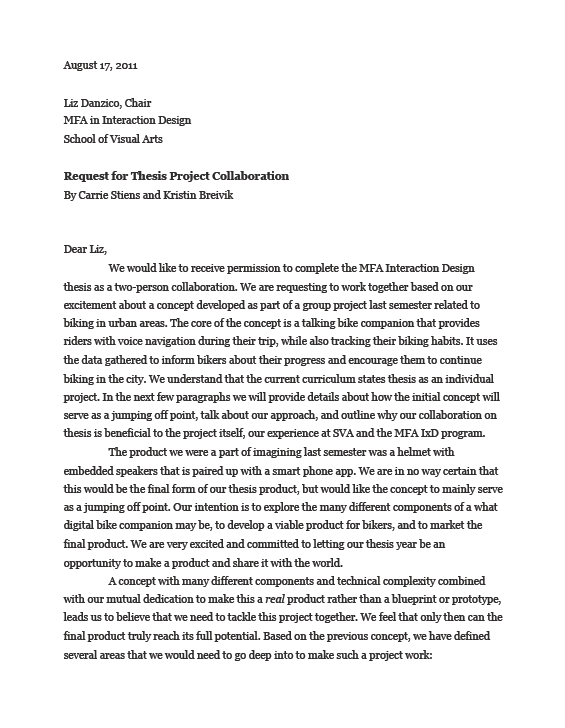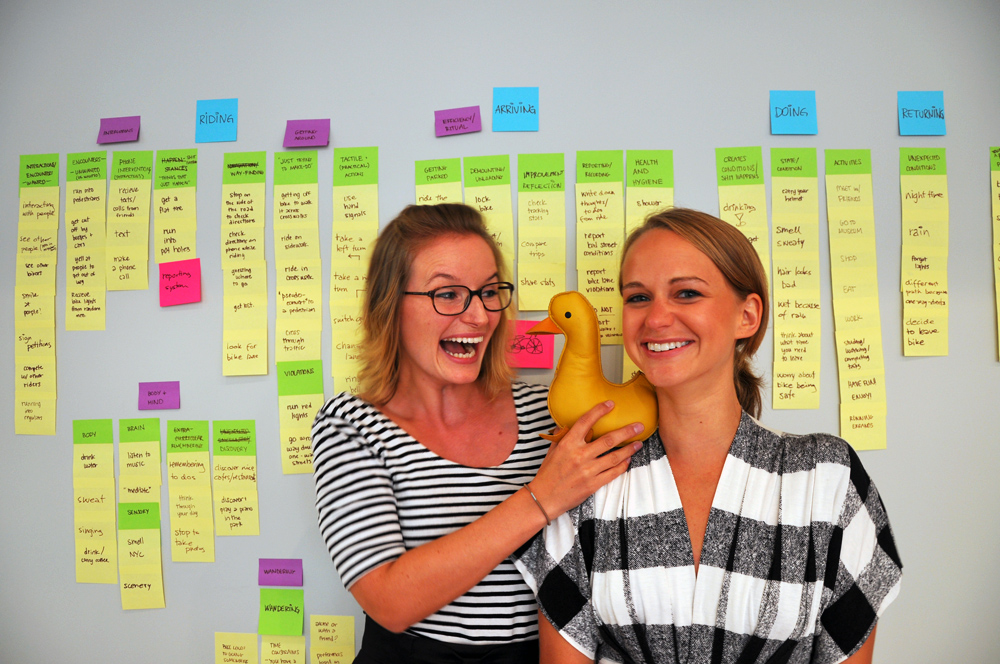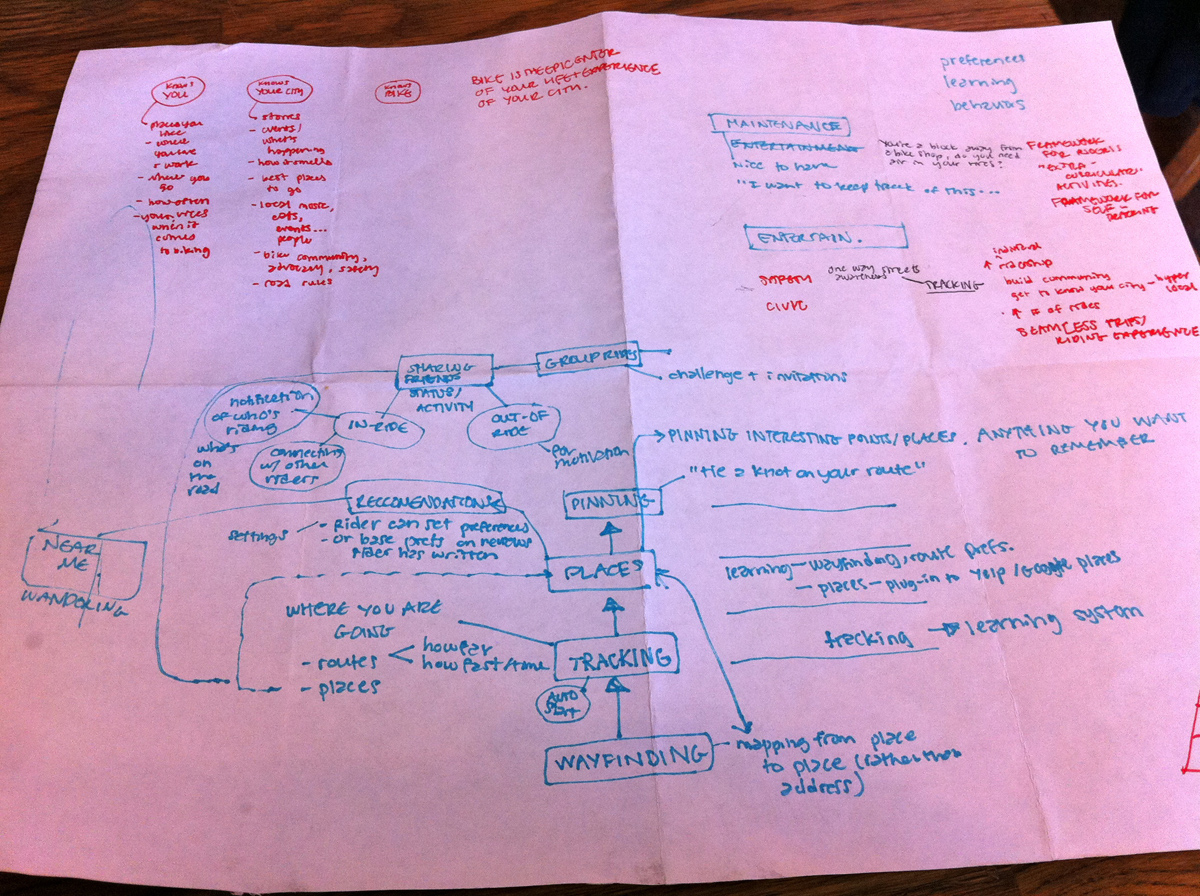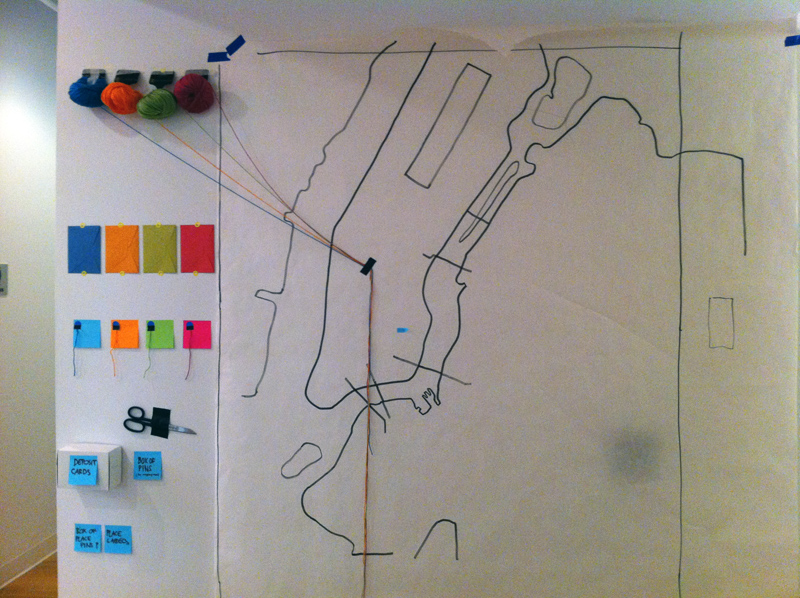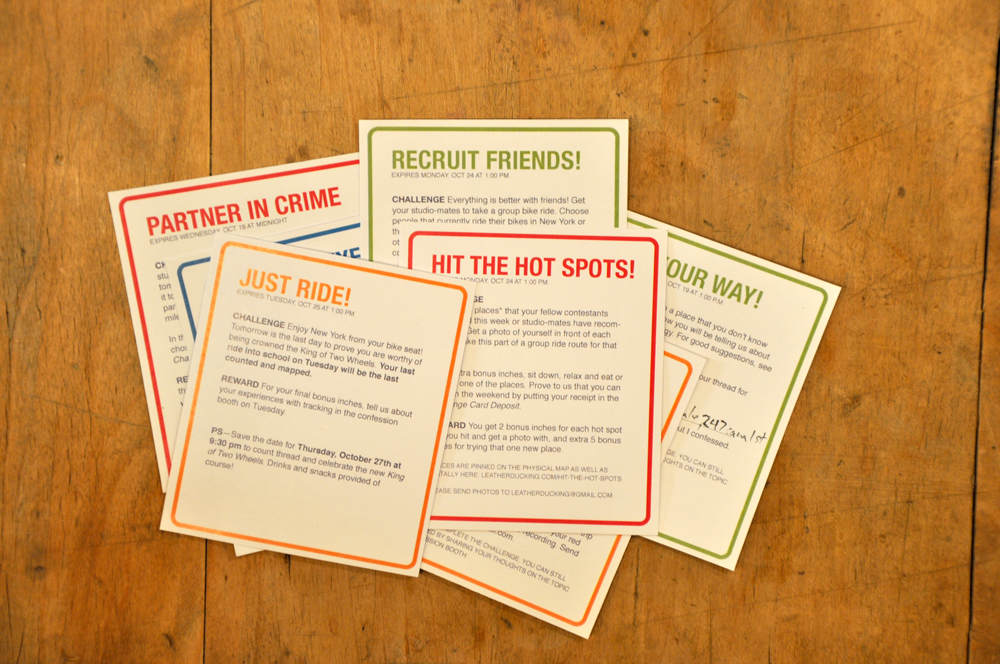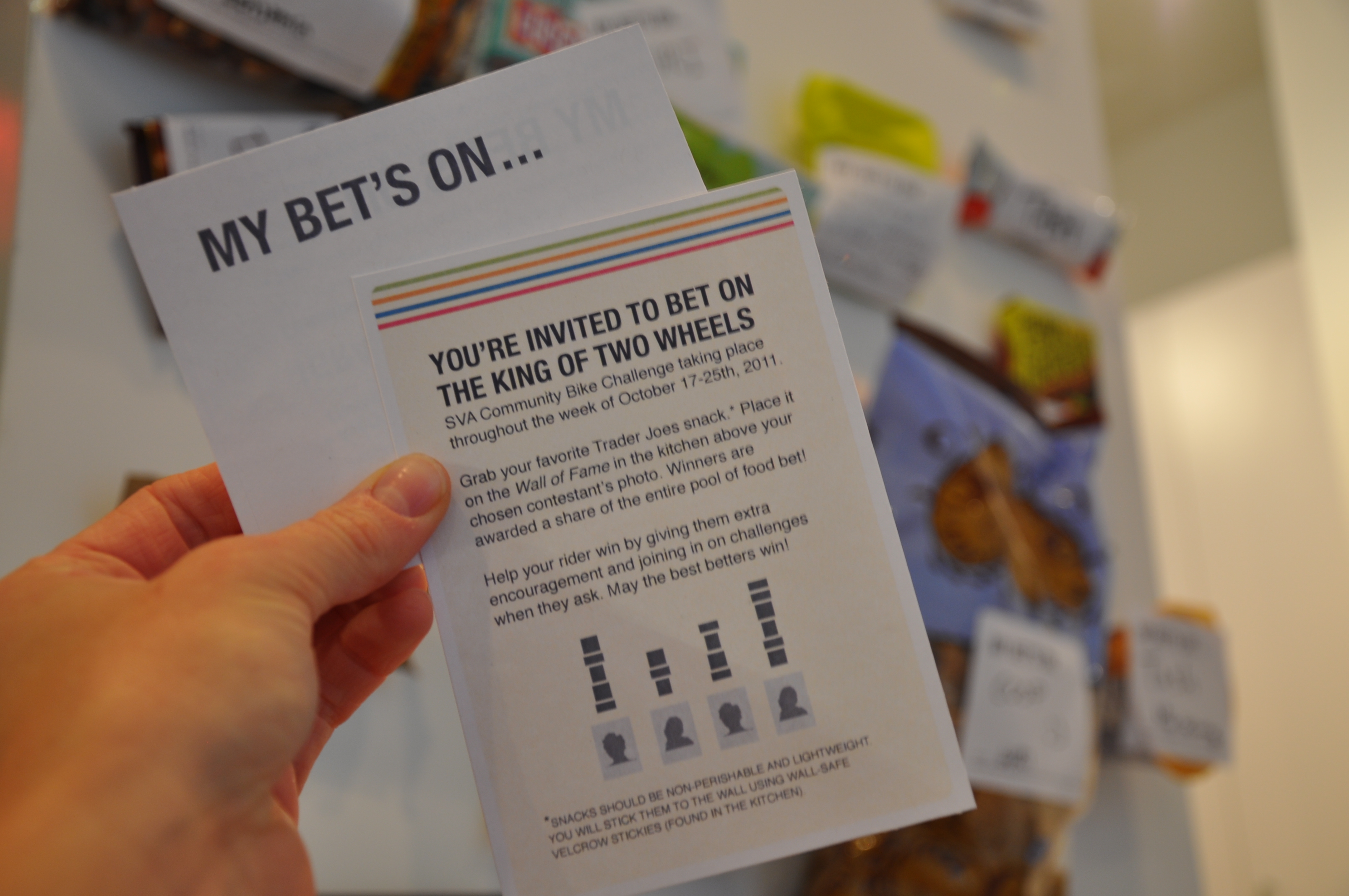I was riding my bike up Kent Avenue on my way from Carroll Gardens to Greenpoint. I had already taken three wrong turns when it hit me—I need helmet head. For those of you who aren’t familiar, helmet head was a concept for a talking bike companion that Kristin and I had developed with Allison Shaw and Tina Ye in last spring (2011) at SVA. In that moment, on Kent Ave, I desperately wanted it to exist.
We met at Gorilla cafe over steaming coffees.
“What do you think about building helmet head for thesis?” I asked Kristin. And the conversation began.
We want our thesis year to be about making something and putting it out in the world. Going beyond research and concepting to a darn good working prototype that we can hand to people to use is important to us. As a next step, we decided to talk with our former teammates, and do some experience testing and general tech research about how we could build the project. It’s going to be a pretty robust undertaking, so we should be sure before committing.

